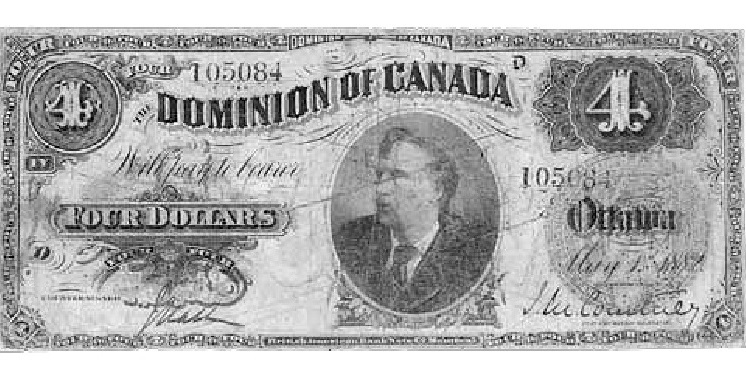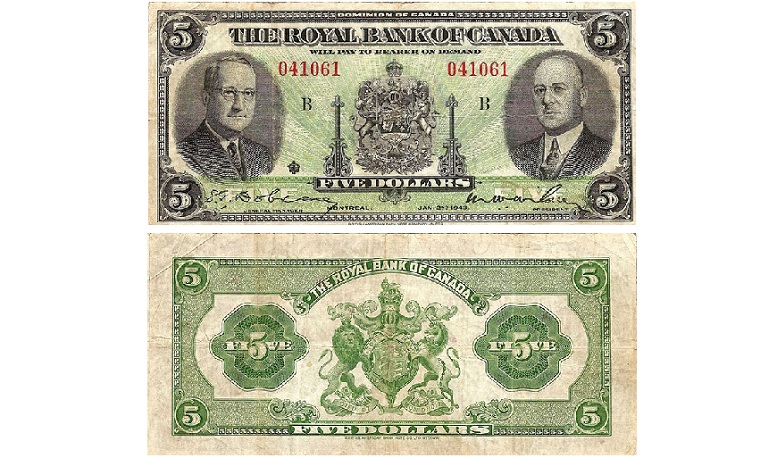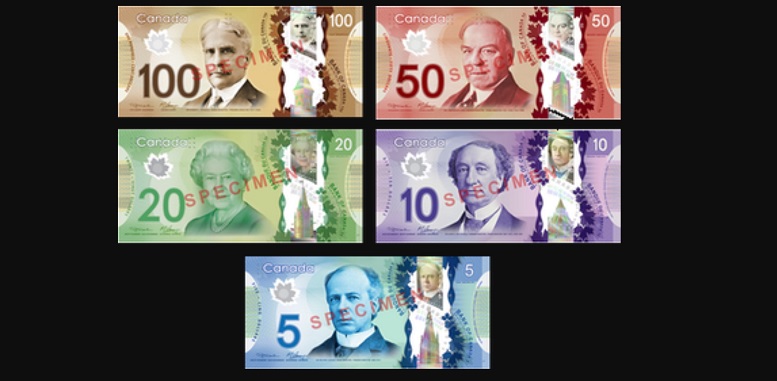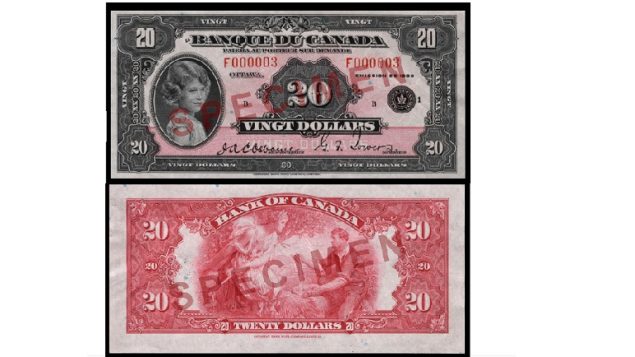It wasn’t until 1935 that Canada had what could be classed as “official unified Canadian” banknotes.
There had been a variety of banknotes issued both before and after Confederation in 1867, but these consisted of the many banks across the country issuing their own paper money which could be redeemed at the bank for coinage.
Banks also differed in that some issued notes in pounds sterling, reflecting attachment to the British empire, while others in decimal dollars reflecting the close trading ties with the U.S.
After confederation however along with individual banks, the Province of Canada (Ontario and Quebec) issued “Dominion of Canada” notes which were also distributed to other provinces.

An 1882 “Dominion of Canada” $4 note, a national banknote which co-existed in the country with private bank notes. (Museum of Currency. Featured is the then Governor-General, the Marquess of Lorne ( Governor-General Museum of Currency)
Following several private bank failures around the turn of the last century making their “notes” worthless, calls came for greater regulatory control of monetary policy and in 1934 the government approved the Bank of Canada Act, which created a central bank policy for the country. At the time there were still 10 banks issuing their own notes and the idea of a national currency was contested by those banks which feared a loss of profit they gained from the issuing of their own notes.

The original Bank of Canada headquarters building in Ottawa, and the much larger addition behind in a glaring clash of architectural styles.. (Bank of Canada)
Nevertheless, on March 11, 1935, Canada issued its first truly unified national banknotes. At the time the notes were not bilingual but issued separately either in French or in English. Dominion of Canada notes were slowly withdrawn and chartered banks were told to reduce their own issuing of notes.
However, it wasn’t until 1944 that chartered banks were actually prevented from issuing their own notes. The last two banks to issue their own bills were the Bank of Montreal which printed its last banknote in 1942, a $5 note, while the Royal Bank of Canada issued it’s last note in 1943 also with a face value of $5.

The last commercial bank issued note in Canada, by the Royal Bank of Canada (RBC) in January 1943. Features the bank’s executives. (Bank of Canada currency museum)
In Canada now, the $1 and $2 notes have been discontinued and replaced by coins, while the largest denomination bill is now only $100.
From the outset, Canadian notes have been printed in various colours for the denominations as the case for many currencies world wide and unlike the uniformly grey green of U.S notes. In 1935, these were green for the $1 banknote, blue for the $2 banknote, orange for the $5 banknote, dark purple for the $10 note, rose for the $20, reddish brown for the $50, dark brown for the $100, sepia for the $500 note, and olive for the $1000 banknote.

Canada’s 2011 “Frontier” series featuring our early Prime Ministers.. Now printed on polymer with holograms and other features difficult to counterfeit. (Bank of Canada)







For reasons beyond our control, and for an undetermined period of time, our comment section is now closed. However, our social networks remain open to your contributions.